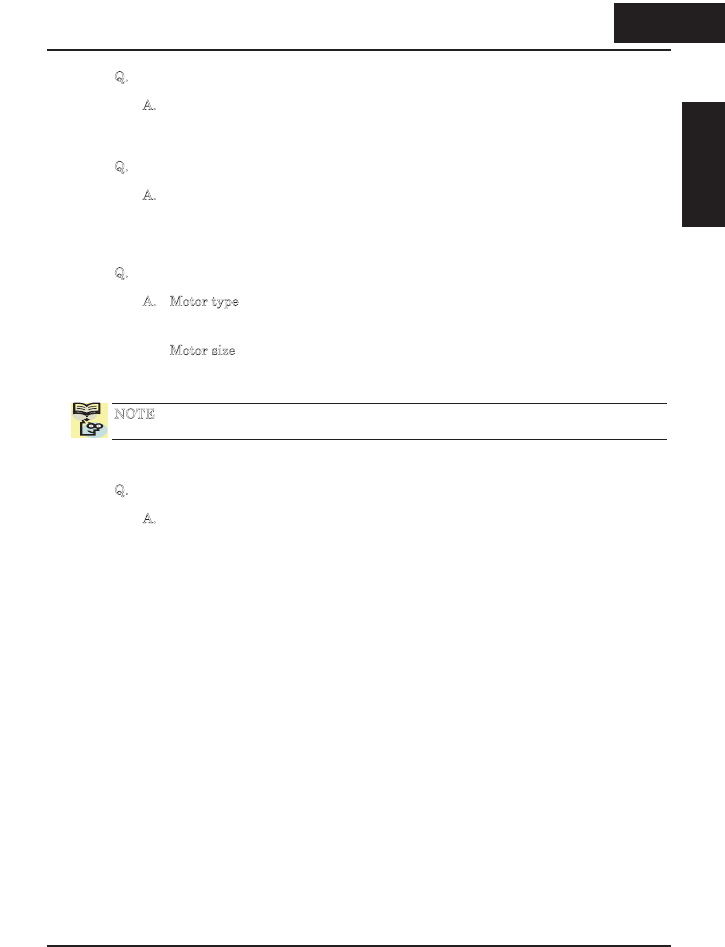
Q. Why doesn’t the motor have a neutral connection as a return to the inverter?
A
. The motor theoretically represents a “balanced Y” load if all three stator
windings have the same impedance. The Y connection allows each of the three
wires to alternatively serve as input or return on alternate half-cycle.
Q
. Does the motor need a chassis ground connection?
A
. Yes, for several reasons. Most importantly, this provides protection in the event
of a short in the motor that puts a hazardous voltage on its housing. Secondly,
motors exhibit leakage current that increase with aging. Lastly, a grounded
chassis generally emits less electrical noise than an ungrounded one.
Q
. What type of motor is compatible with the Hitachi inverters?
A
. Motor type – It must be a three-phase AC induction motor. Use an inverter-
grade motor that has at least 800V insulation for 200V class inverters, or
1600V insulation for 400V class.
M
otor size – In practice, it’s better to find the right size motor for your
application; then look for the inverter to match the motor.
N
OTE: There may be other factors that will affect motor selection, including heat
dissipation, motor operating speed profile, enclosure type, and cooling method.
Q. How many poles should the motor have?
A
. Hitachi inverters can be configured to operate motors with 2, 4, 6, or 8 poles.
The greater the number of the poles, the slower the top motor speed will be, but
it will have higher torque at the base speed.
125
Getting started
1 25
Getting started


















